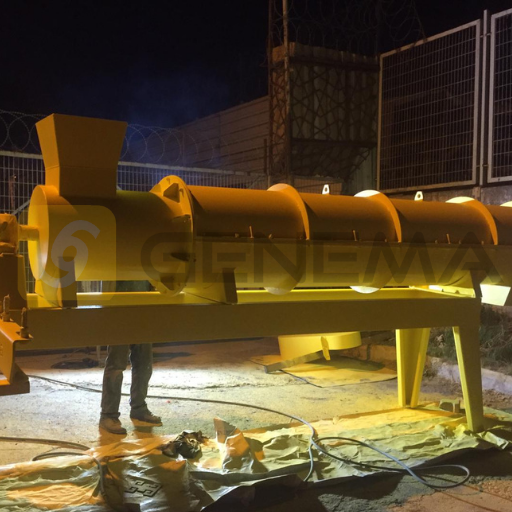
GENEMA transforms raw fertilizers into small, uniform particles called granules through the process of fertilizer granulation. These granules, which are more convenient to handle and apply to crops, are easier to spread evenly and do not clump together like raw fertilizers.
Fertilizer Granulation Methods
Several methods of granulating fertilizers exist, each with its own benefits and drawbacks. The most common methods are:
Wet granulation: Our GGM Granulators mix the raw fertilizers with water to form a slurry in this method. A granulator then shapes the mixture into granules. Wet granulation is suitable for fertilizers that are difficult to granulate using other methods, such as highly-soluble fertilizers.
Dry granulation: Our Turbo Granulators compress the raw fertilizers under high pressure to form granules in this method. Dry granulation is suitable for fertilizers that are prone to caking or clumping, as the high pressure helps to bind the particles together.
Extrusion: Our Ex-Granulators heat and extrude the raw fertilizers through a die to form granules in this method. Extrusion is suitable for fertilizers that are difficult to granulate using other methods. Because heat and pressure help to bind the particles together.
Fluid bed granulation: Our F-Granulators suspend the raw fertilizers in a fluidized bed and add a binder to the mixture in this method. The binder helps to bind the particles together and form granules. Fluid bed granulation is suitable for fertilizers that are difficult to granulate using other methods. Because fluidized bed helps to evenly distribute the binder.
After granulating the fertilizers, we typically dry and coat them to improve their storage and handling properties. We then typically pack the granules into bags or containers for distribution and use.
Granulating fertilizers has several benefits, including improved handling and storage properties, increased crop yields, and reduced leaching and runoff of nutrients. Properly granulated fertilizers are also less prone to caking or clumping, which makes them easier to spread evenly and accurately.
Overall, fertilizer granulation is an important step in the production and use of fertilizers, as it helps to improve the performance and effectiveness of these essential plant nutrients.
Examples of Granular Fertilizers
- Nitrogen-based fertilizers: Nitrogen is an essential element for plant growth and is often the primary nutrient that is lacking in soil. Nitrogen-based fertilizers include urea, ammonium nitrate, and ammonium sulfate.
- Phosphorous-based fertilizers: Phosphorous is another essential element for plant growth and is important for root development and fruit production. Phosphorous-based fertilizers include monoammonium phosphate, diammonium phosphate, and triple superphosphate.
- Potassium-based fertilizers: Potassium is another important element for plant growth. It is involved in many physiological processes, including water uptake and photosynthesis. Potassium-based fertilizers include potassium chloride and potassium sulfate.
- Compound fertilizers: Balanced fertilizers contain a combination of nitrogen, phosphorous, and potassium (NPK) in specific ratios that are tailored to the needs of different crops. These fertilizers are often labeled with their NPK ratio, such as 10-10-10 or 20-20-20.
- Specialty fertilizers: Specialty fertilizers are formulated for specific crops or soil types and may contain additional micronutrients or trace elements. These fertilizers may be targeted to address specific nutrient deficiencies or to improve the overall fertility of the soil. Examples of specialty fertilizers include lime, gypsum, and sulfur.
Fertilizer Granulation Request Form: Fertilizer Granulation RFQ
Application Video: Granular Fertilizer

